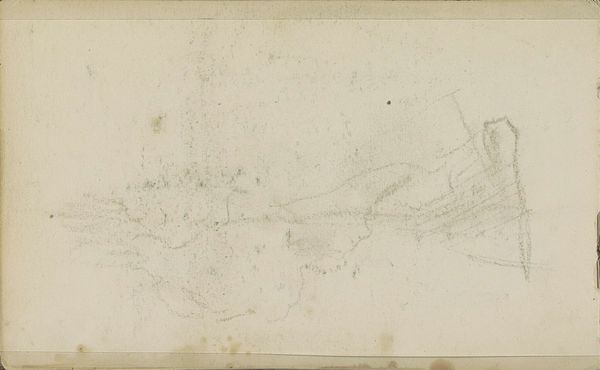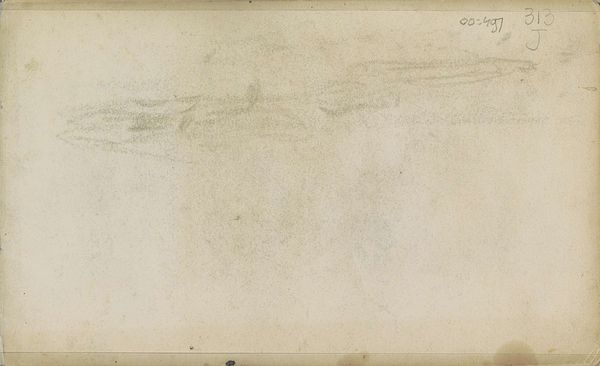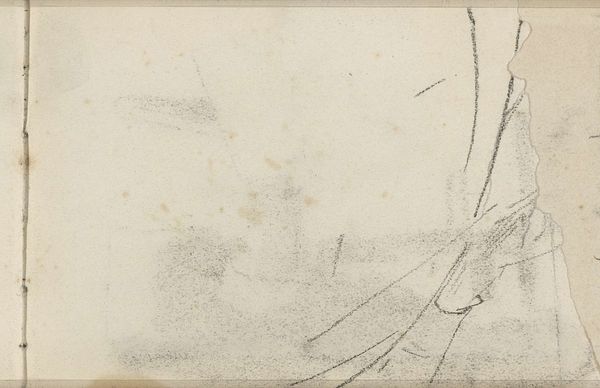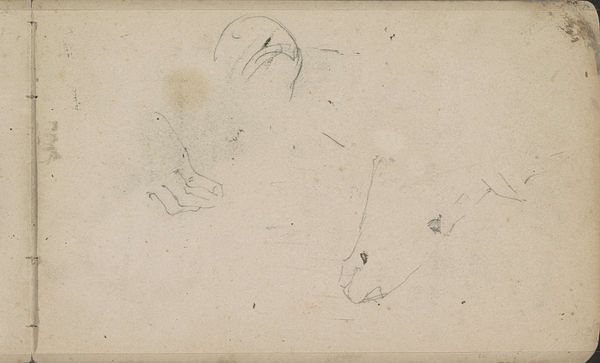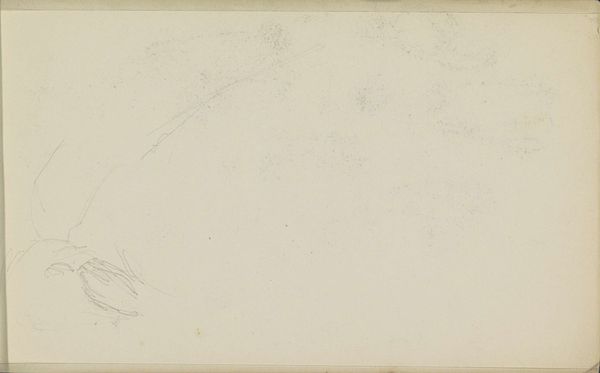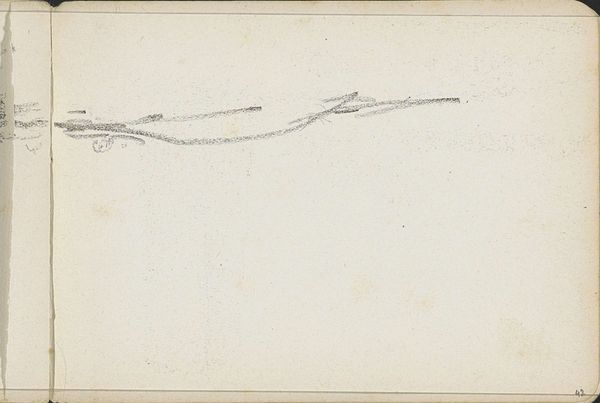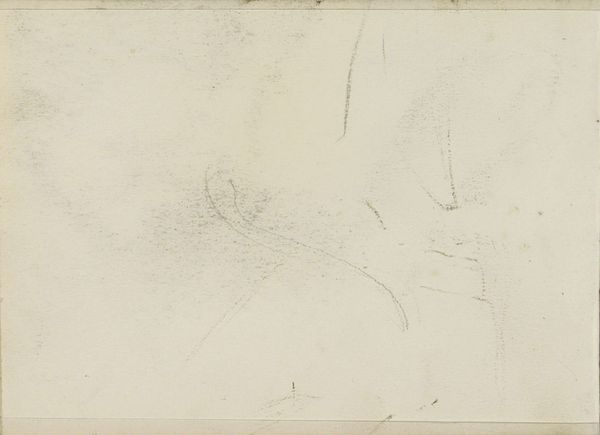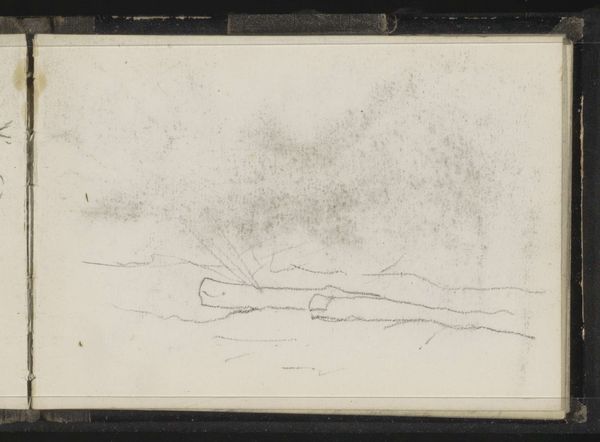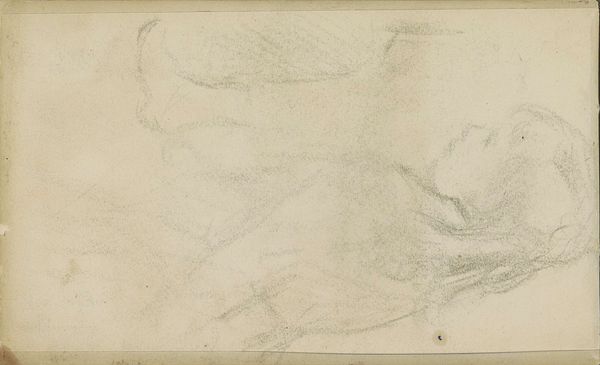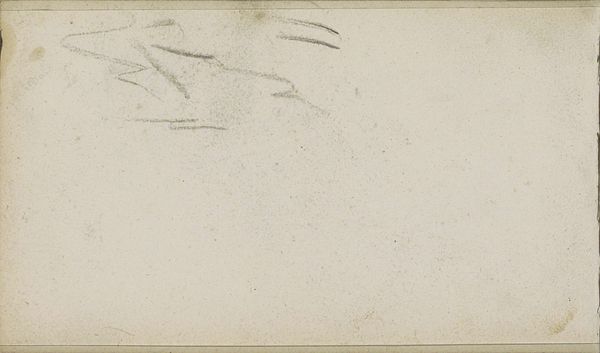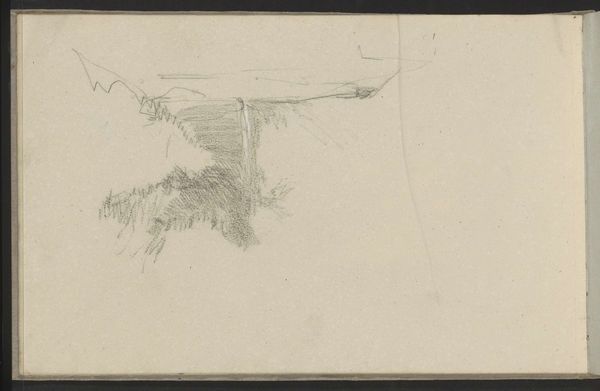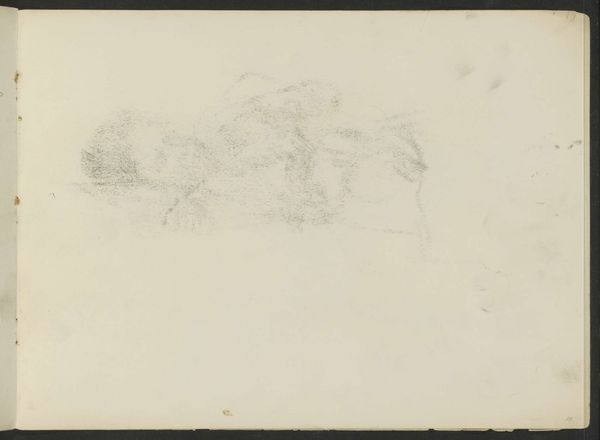
Copyright: Rijks Museum: Open Domain
Curator: Here we have Louis Apol's "Icebergs in the Barents Sea," a drawing from 1880 currently housed in the Rijksmuseum. Editor: There's a chilling austerity to this drawing, even beyond its subject matter. It's so stark and minimal; the pale graphite almost bleeds into the paper. Curator: Apol was known for his winter landscapes, and this piece certainly captures that fascination. He frequently traveled, often commissioned, to document these polar regions, fueling public interest. It touches upon the romantic ideals of the sublime power of nature, but it is also deeply rooted in the then popular style of realism. Editor: Absolutely. And consider the means of its creation. Pencil and graphite, accessible and portable, ideal for an artist venturing into remote, icy landscapes. There's an immediacy here. Did the drawing start as an on-site sketch, something brought back to his studio, or was it a fully rendered artwork meant for display, perhaps printed as a lithograph, or sold? It's intriguing how the means speaks to consumption, in the art market in general. Curator: The starkness reinforces the message. In 19th-century Dutch society, such scenes reminded viewers of the power of the natural world, reflecting ongoing themes of exploration, trade, and even potential dangers in the pursuit of resources. The image spoke to colonial ambitions in an increasingly global world. Editor: Indeed. It prompts you to reflect on how this depiction of a landscape is related to extraction. Who profited? How might native populations have viewed this landscape, a subject captured by the European gaze and converted into capital? Curator: Ultimately, it's a visually sparse piece that speaks volumes about its time. Editor: Agreed, and how simple tools shaped complex interactions, still resonating today.
Comments
No comments
Be the first to comment and join the conversation on the ultimate creative platform.
